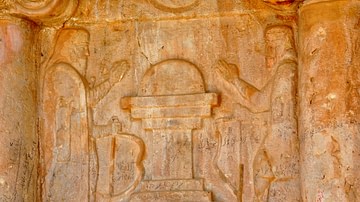Review

| Rating: | |
|---|---|
| Title: | Raiders, Rulers, and Traders: The Horse and the Rise of Empires |
| Author: | David Chaffetz |
| Audience: | General Public |
| Difficulty: | Medium |
| Publisher: | W. W. Norton & Company |
| Published: | 2024 |
| Pages: | 448 |
Chaffetz deftly illustrates the vast history of Asia and its great empires -- Chinese, Persian, Indian, and Mongol -- through a history of horsepower. The cultures of the people of the steppe, their religions, technology, and migrations also come into play. Expertly, Chaffetz shows that horse breeding and trading, not the fabled Silk Road, linked these historical forces together over time and distance.
The Silk Road may have carried the world’s most luxurious fabrics for trade, but it was paved with horses’ hooves. From the Bronze Age to the 20th century, the empires of China, Persia, India, and Mongolia conquered astride the backs of horses. By focusing on the history of the horse in Raiders, Rulers, and Traders, David Chaffetz provides fascinating insights into conquests in history, from the Persian Empire of Cyrus the Great to the Russian Empire of Alexander II.
Chaffetz traces the evolution of the horse from a wild animal of the Eurasian steppe to its place at the center of war and commerce over almost 3,000 years of human history. The earliest horses weren’t much larger than donkeys. He shows that the first domesticated horses pulled carts and chariots — as it took centuries of breeding until they were strong enough to carry humans. The breeds of horses reflected the cultures that adopted them: the sleek, speedy raiders of Arabia; the huge, powerful Persian steeds; and the sturdy Mongol breeds whose endurance and ability to thrive in harsh conditions were key to Ghengis Khan’s continent-spanning conquests. Maps of the Eurasian Steppe in every chapter help readers to keep track of the disparate locations, and illustrations show the artifacts that these cultures created to celebrate horsemanship.
Of the empires covered in the book, China gets a special focus. The Great Wall was built by the Qin Dynasty in the 2nd century BCE to protect the northern frontier from horse-mounted raiders. Yet China needed horses for its own armies, and large-scale horse breeding was difficult in the hills and fertile valleys south of the wall. A sophisticated trading network grew along the frontier in which trade goods like silk and tea were traded were exchanged for animals.
The Silk Road grew in the wake of a 1st-century BCE military expedition led by the Han general, Li Guan Li, to find the “blood-sweating” Ferghana horses that nomads had described to Chinese horse traders. Braving high mountain passes and arid wastes in a journey that presaged those of Coronado and Lewis & Clark in North America, Li laid siege to a citadel near the present-day Kyrgyz city of Aravan. His reward was 300 of these “celestial horses” along with a promise of 2 horses every year thereafter. These yearly journeys, and the return of payments of silk and other commodities, established the Silk Road.
Indian emperors also relied on imported horses from central Asia. In a region whose jungles and deserts were unsuitable for breeding horses, huge trade fairs arose across India, where rajas met Afghani horse breeders to do business. Like China, India faced waves of horse-borne invaders from Afghanistan and Persia. As the sea trade with Arabia and, later, Europe developed, southern Indian rulers gained key means to defend their lands.
Horsepower remained the key to empires into the dawn of the 20th century, during which gasoline-powered vehicles arose. In later chapters Chaffetz covers Britain’s strained efforts to breed horses in India – and strike deals with Afthani traders – as well as the Russian Empire’s use of cossack cavalries to conquer the steppe.
In appendices, Chaffetz details the prices of horses in China and India in both historic and present-day terms. A timeline connects concurrent developments in the Western Steppe (Persia) the Indian Subcontinent and the Eastern Steppe.
Chaffetz writes frequently for publications like Asian Review of Books and is a member of the Royal Society for Asian Affairs. Raiders, Rulers, and Traders is a broad history that will augment readers’ knowledge of the great empires of Asia. Its focus on horse husbandry is a useful gateway into history for reluctant learners.
About the Reviewer
Cite This Work
APA Style
Dittes, J. (2024, October 17). Raiders, Rulers, and Traders: The Horse and the Rise of Empires. World History Encyclopedia. Retrieved from https://www.worldhistory.org/review/474/raiders-rulers-and-traders-the-horse-and-the-rise/
Chicago Style
Dittes, James. "Raiders, Rulers, and Traders: The Horse and the Rise of Empires." World History Encyclopedia. Last modified October 17, 2024. https://www.worldhistory.org/review/474/raiders-rulers-and-traders-the-horse-and-the-rise/.
MLA Style
Dittes, James. "Raiders, Rulers, and Traders: The Horse and the Rise of Empires." World History Encyclopedia. World History Encyclopedia, 17 Oct 2024, https://www.worldhistory.org/review/474/raiders-rulers-and-traders-the-horse-and-the-rise/. Web. 24 Apr 2025.




